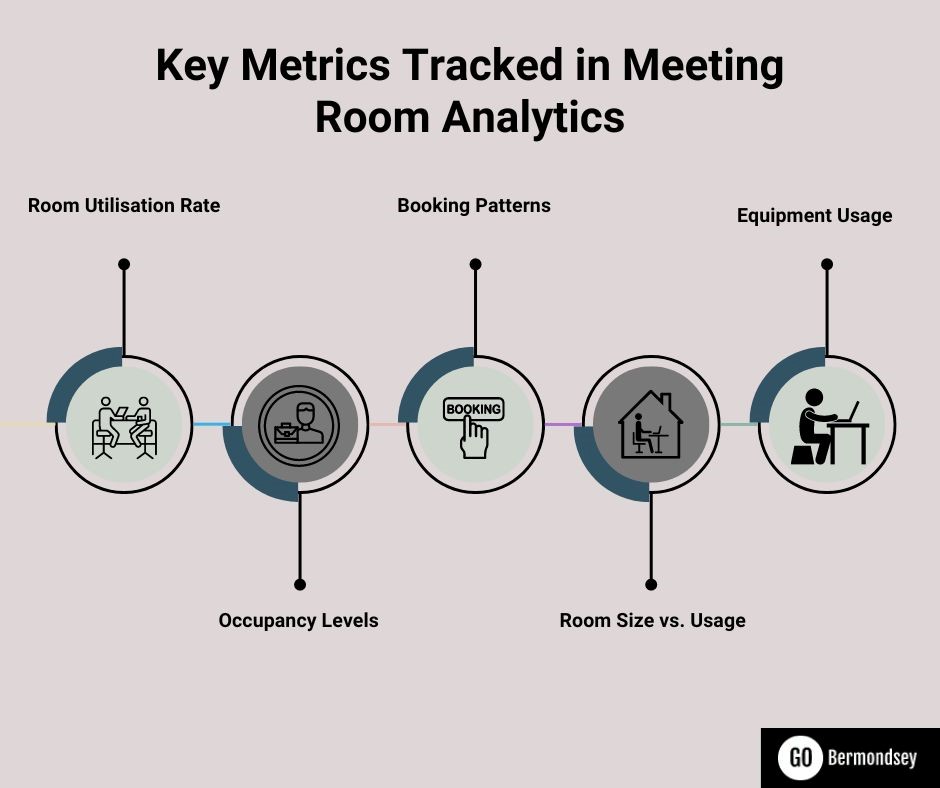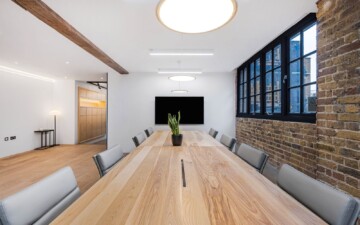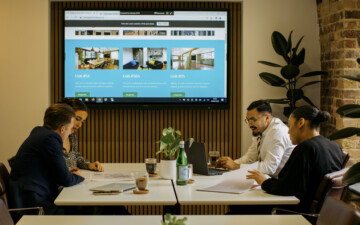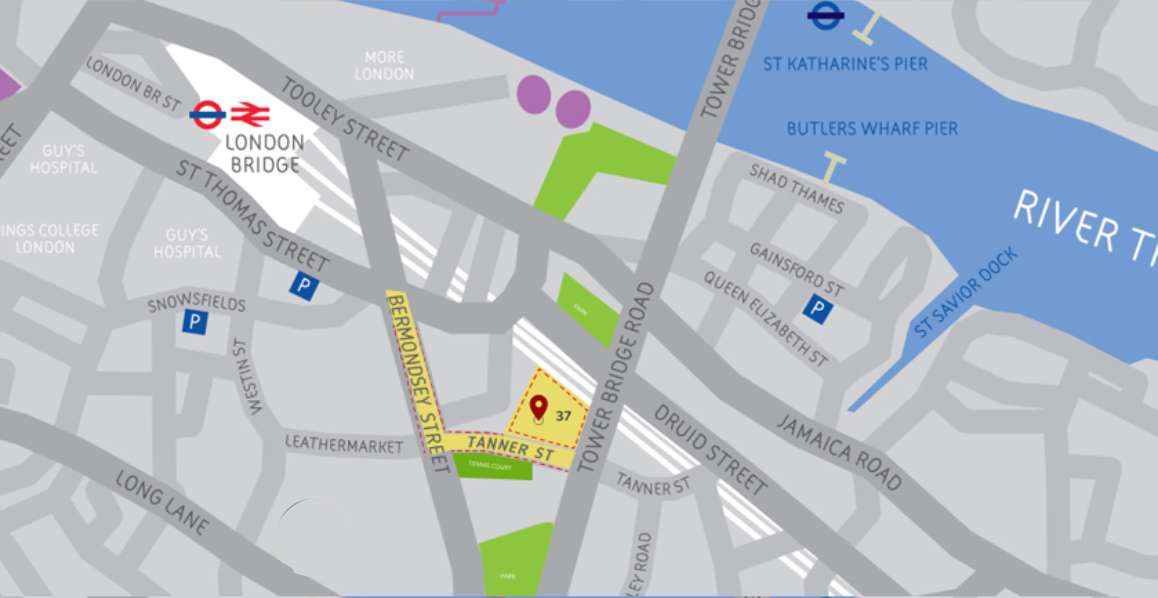Whether it’s brainstorming new product ideas, conducting team huddles, or hosting client meetings, meeting rooms play a crucial role in driving business success.
But how do you know whether you’re utilising your meeting rooms optimally? Meeting room provide valuable insight into how your spaces are utilised by harnessing the power of data. In this article we shall discuss key metrics to track, the benefits of meeting room analytics, and what the future has in store for meeting room space management.
What are Meeting Room Analytics?
Meeting room analytics, also known as conference room analytics, involves analysing data from meeting spaces. This data is collected through sensors placed in meeting rooms and integrated business systems such as conference room booking software, and calendars that track metrics such as occupancy levels, booking patterns, and equipment utilisation.
By examining such data, you can gain valuable insight into how efficiently your meeting rooms are being used. Tracking and optimising these metrics can reduce resource wastage, improve workspace efficiency, and ensure your conference rooms align with your dynamic needs.
Meeting room analytics helps businesses make data-driven decisions, drive collaboration and create a productive work environment.
Key Metrics Tracked in Meeting Room Analytics

Here are some common types of meeting room analytics that you can leverage to gain insight into your workspace utilisation:
Room Utilisation Rate
This metric gives you insight into how often your meeting rooms are booked and used. It helps you understand whether your conference rooms are being utilised optimally and helps you take necessary action.
For instance, if your meeting rooms are booked only 40-50% of the time, it might be time to analyse why this is the case (lack of necessary technology, inadequate space, etc.) or to rethink your workplace layout.
- Occupancy Levels
Occupancy levels provide real-time data on how many people are using meeting rooms at any given moment. This metric is essential for understanding room utilisation and identifying underused or overcrowded spaces.
By tracking occupancy levels, businesses can optimise room allocation, ensure efficient use of space, and make data-driven decisions to enhance workplace productivity and comfort.
- Booking Patterns
This helps you understand the peak booking times and employee trends associated with your meeting room utilisation, such as the frequency of cancellations and last-minute bookings. By analysing these patterns, businesses can identify trends, optimise room availability, and prevent scheduling conflicts.Understanding booking patterns is crucial for ensuring that meeting spaces are used efficiently, meeting the demands of a dynamic workplace, and enhancing overall productivity.
- Room Size vs. Usage
Room Size vs. Usage metrics analyse whether meeting rooms are appropriately sized for their usage. By tracking how often a room is occupied and the number of attendees, businesses can determine if the space is being underutilised or overcrowded.This analysis helps optimise room assignments, ensuring that spaces are effectively matched to meeting needs, thereby enhancing overall workspace efficiency and productivity.
- Equipment Usage
This focuses on tracking how frequently and effectively the technology and tools in meeting rooms are utilised. By analysing data on equipment use—such as projectors, audio/visual systems, and smart boards—businesses can assess whether these resources are meeting their intended purposes.This insight helps identify underused or malfunctioning equipment, enabling timely upgrades and ensuring that meeting rooms are fully equipped to support productive sessions.
Benefits of Implementing Meeting Room Analytics
Here is why you should consider implementing meeting room analytics into your business operations:
- Optimising Space Utilisation
Integrating meeting room analytics into your operations helps you make the most of your available meeting spaces. By analysing usage patterns, companies can identify underused rooms and adjust allocations to ensure that all spaces are effectively utilised.This optimisation maximises room availability, ultimately enhancing overall workspace efficiency.
- Cost Efficiency
Meeting room analytics contribute to cost efficiency by identifying unused or underutilised spaces. With these insights, businesses can streamline their office layout, potentially reducing overhead costs associated with maintaining excess meeting rooms.This helps you allocate resources more effectively and can help you to avoid unnecessary expenditures on unused spaces.
- Enhanced Employee Productivity
Meeting room analytics provide real-time data on room availability and usage. This enhances employee productivity by streamlining the booking process, and minimising scheduling conflicts.
- Data-Driven Decision Making
Meeting room analytics empower businesses to make data-driven decisions regarding office layout and space allocation.This helps create a more functional office layout that aligns with actual usage, supporting better space management and planning.
Real-World Applications of Meeting Room Analytics
According to Wifitalents, almost 40% of employees say that their workplace layout affects their overall job satisfaction. With meeting room analytics, you can optimise your workplace and, by extension, drive employee satisfaction with granular insight into your employee’s meeting room booking trends and preferences.
Here are some real-world applications of meeting room analytics:
- Improve Workplace Policies
Insight into your meeting room utilisation regarding the types of meetings, their average capacity, employee attendance and frequency of meetings can help you refine your workplace policies.For instance, if you have a hybrid work model and notice your meeting rooms are being overbooked, you can allocate specific days of the week when certain teams must work from home. This will help prevent booking conflicts.
- Ensure Efficient Management of Facilities
Meeting room analytics help facility managers understand how employees are using meeting rooms. They offer insight into occupancy and employee flow to help them make informed decisions regarding maintenance routines, utilities, and other services that can impact employee productivity.
Here are some challenges associated with adopting meeting room analytics:
- Employee Resistance: Employees might resist change, especially technology-related changes. To gain employee support, be sure to communicate clearly and highlight the benefits or the solution.
- Network Compatibility Issues: Integrating a new solution with your current stack can be challenging. To avoid any hitches, work with IT professionals who can help you address any issues on priority.
- Dependability concerns: Choose quality service providers to prevent data breaches, system crashes, and unnecessary downtime.
Integrating Meeting Room Analytics with Existing Systems
Integrating meeting room analytics with your current tech stack helps streamline operations and enhance data insights. You can achieve this by selecting compatible analytics platforms that can work seamlessly with your current business systems.
The Internet of Things (IoT) can play a critical role in enhancing meeting room analytics. It does this by connecting different devices and sensors and generating the basis for a data-driven network which offers data on occupancy levels, utilisation and more in real-time. Some crucial IoT applications involved in managing meeting rooms include:
- Occupancy sensors: Helps check whether the meeting room is being utilised regardless of booking.
- Smart Furniture: Chairs and tables that detect occupancy and layout.
- Environmental Monitors: These track temperature, air quality, humidity, etc.
Here are some tips that can help you select the best meeting room analytics solution for your business:
- Scalability: Your chosen meeting room analytics solution should be able to support you as your business, employees, and operations grow.
- Ease of Integration: Your chosen meeting room analytics solution should integrate seamlessly with your existing tech stack.
- User-friendly Interface: Your chosen meeting room analytics solution should have an intuitive interface that is easy for your non-technical employees to use.
- Sound Customer Service: Your chosen tool should offer after-sales service and support to help onboard and maintain the platform.
Future Trends in Meeting Room Analytics
AI and machine learning are set to transform the future of conference room analytics. These technologies will enable predictive insights into meeting room utilisation. By analysing data such as attendance, duration, and frequency, AI can identify patterns and optimise scheduling, ensuring that the right spaces are available at the right times.
With the hybrid work model here to stay, these technologies will be crucial in adapting meeting room utilisation to fluctuating in-office attendance.
Additionally, innovations in sensor technology will provide enhanced real-time data on room occupancy and utilisation, while advanced data visualisation tools will make it easier to interpret and act on these insights. Together, these trends will empower businesses to create more efficient and adaptable workspaces.
Conclusion
Meeting room analytics can offer a powerful way to optimise your workspace, ensuring that space in your office is used effectively. By tracking key metrics, you can optimise space utilisation, enhance employee productivity, drive cost efficiency, and make more data-driven decisions about your meeting spaces. As the future of work continues to evolve, staying ahead with tools like meeting room analytics will help your business adapt and thrive.
At GO(Garden Office) Bermondsey, we understand the importance of creating a workspace that meets the needs of modern businesses. Our flexible office spaces are designed to inspire productivity and foster collaboration with state-of-the-art facilities that can be tailored to your unique requirements. Whether you’re a growing startup or an established company, GO (Garden Office) Bermondsey offers the perfect environment to take your business to the next level. Explore our offerings and discover how we can support your success.
To learn more about our services, book a visit today!






